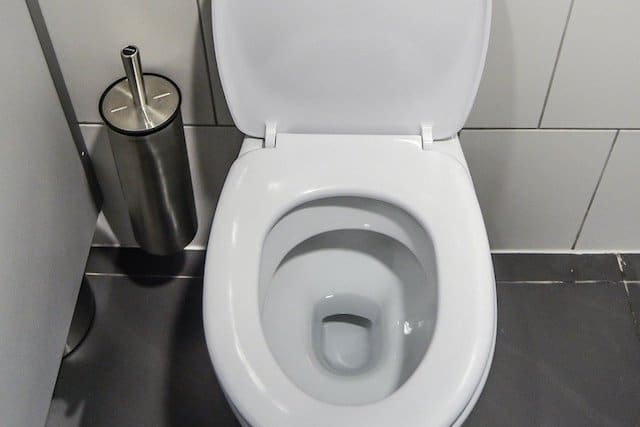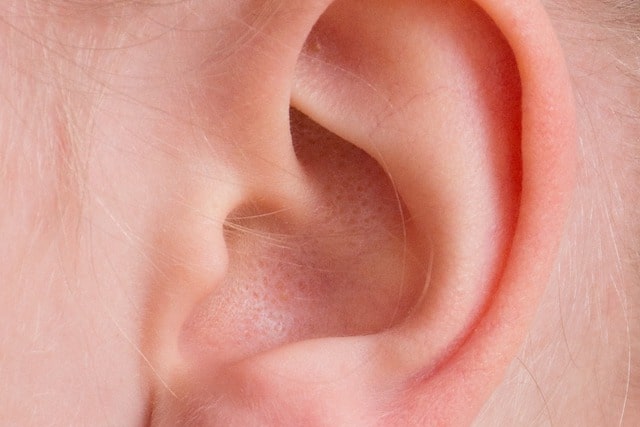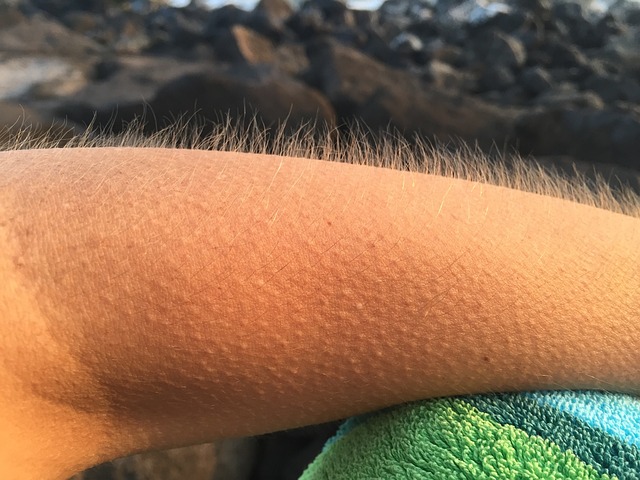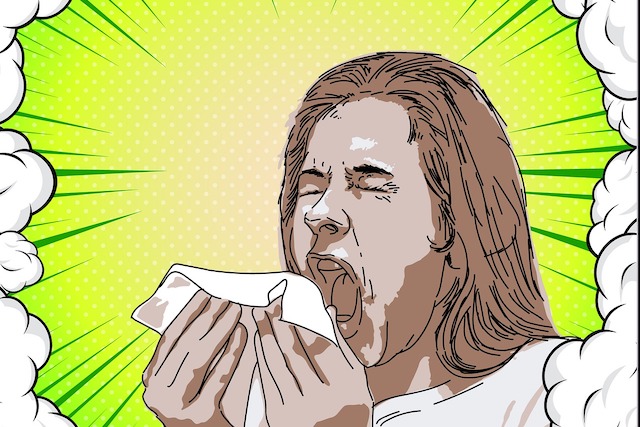How good do you think your reflexes are? How many reflexes do you have? Strictly speaking, a reflex is an action your body performs in response to some kind of stimulation, but without any conscious effort on your part. Most of us will have to go to the doctor and have him tap our knee with that little hammer to see if we fall over, but that’s just one of many reflexes the human body uses. Some reflexes are much more unusual and exist for unpredictable reasons.
10. Hippos have a reflex that allows them to sleep in water without drowning.

Humans, of course, cannot claim sole mastery over reflex actions, since most living beings, for one reason or another, have many reflexes. In some animals, they are also highly specialized, such as the hippopotamus.
Since the hippo spends most of its life in the water but can't breathe underwater, it has to be careful not to drown. Hippos even sleep in the water, which makes breathing even more difficult if you think of it as a completely conscious effort. Luckily for hippos, they have a reflex that takes care of this.
The hippopotamus can fall asleep underwater, where it can hold its breath for only five minutes. The animal surfaces, breathes, and then goes back under water while it sleeps, thanks to a reflex action.
9. Nerve impulses can cause the severed head of a dead snake to bite you

If you know anything about surviving in the wild, you probably know that if you kill a venomous snake in the wild, you need to be wary of its head, even if you cut its head off. A reflex action in the snake's head can cause it to bite and inject venom even though the head is no longer attached to the body.
The snake's head could potentially bite you within a few hours. In fact, in some parts of the world, it's not uncommon for people to believe they are in no danger and be bitten by a severed head.
8. The rectoanal inhibitory reflex can differentiate between gas and stool.

There are a lot of reflex actions that provide us with a kind of safety. They do things for us that need to be done. Things that, if they were left to our conscious mind to control, we probably wouldn't be able to do fast enough or often enough to use them. Maybe if none of your reflex actions worked, you probably wouldn't live very comfortably. For example, the recto-anal inhibitory reflex.
There aren't many subtle ways to say this, so let's not beat around the bush. This reflex is what allows you to judge whether you're about to pass gas or something else. You can imagine how valuable this reflex is when you're sleeping. In other words, the muscles in your rectum are able to determine when you need to go to the toilet or whether a simple fart can safely solve the problem. It's a necessary function for maintaining continence, and without it, you'd have to go to the toilet a lot more often as a precaution.
7. The Arnold reflex causes coughing when the ear canal is stimulated.

There are a number of causes of coughing, which can range from viral or bacterial infections to inhaled irritants, allergies, and more. Figuring out what is causing someone’s chronic cough can be a lot more difficult than you might expect because of the many potential causes. One cause you may want to look at when all other possible causes have been ruled out is the Arnold reflex.
The Arnold reflex causes a cough when the vagus nerve that runs through the ear canal is stimulated. This means that if you have something lodged in your ear or something is damaged, it can put pressure on this nerve and cause chronic cough symptoms that can last for weeks. You may have experienced this if you have ever tried to clean your own ear too aggressively and found yourself coughing once or twice as a result of pushing too deeply. Something as simple as rinsing your ear to clear it can solve the problem.
6. The glabellar reflex allows you to get used to having your forehead tapped.

Here's a weird one you can test yourself without any ill effects. The glabellar reflex can be demonstrated by using one finger and lightly tapping a person between the eyebrows above the nose. The person being tapped should blink each time you tap them with your finger, but only for a short period of time. This blinking is involuntary, and as you continue tapping, the reflex action will cease and the person will be able to keep their eyes open while you tap.
So what is the point of this reflex and why does anyone care? It is actually a useful tool. Habituation to tapping, that is, the ability to get used to it, should occur over a short period. In a healthy adult, if a person cannot get used to the response and continues to blink, this can be used as an early sign of various conditions affecting the brain, including dementia and Alzheimer's disease.
5. Cutting your fingers is a reflex action

Have you ever been in a pool or bath for so long that your hands and feet turned a little red? And you thought the reason your hands and feet turned blue was because they were too wet? Maybe it just absorbed too much water? It turns out that's not true at all, and science has known about it for about a hundred years.
If you have a certain type of nerve damage in your hands, you can't cut your fingers. This means that the effect has nothing to do with the water itself. It's actually a function of your autonomic nervous system. The blood vessels constrict under the skin and cause the wrinkled, prune-like effect. It's a reflex action. But what's the point?
For some time, it has been suggested that the pattern of wrinkles in the skin serves a purpose. The wrinkles form tiny channels that allow water to drain and improve your grip when your hands are wet.
Studies conducted to confirm this theory found that subjects with cut-off hands were better at grasping wet objects than those with dry hands. There was no benefit to grasping dry objects with prune-shaped hands, which seems to indicate that the purpose of cut-off fingers is to help you grasp wet objects in a wet environment.
4. The bulbocavernosus reflex can reveal spinal cord injury

Using a small hammer to tap someone’s knee is a fairly non-invasive way to test a reflex action. But many of our reflex actions are more difficult to assess than that. Testing them requires some pretty surprising techniques that might put you off testing them altogether. One such reflex is the bulbocavernosus reflex, which is used to test for spinal cord injuries. So it sounds like it’s important, but it takes a little work.
In certain types of spinal cord injuries, the bulbocavernosus muscle will not contract when stimulated, allowing for a diagnosis or prognosis of the injury. But testing this muscle requires two hands in awkward places. The muscle itself can be reached by a rectal exam, which means the doctor must use their finger to find it. Stimulating the muscle then requires them to squeeze the patient's genitals with their other hand to see if the muscle contracts.
3. Goosebumps are a rudimentary reflex action.

Goosebumps is the name we give to a physical reaction that usually occurs when you are cold or perhaps when you are scared. One of the most common signs of goosebumps is the hair on a person's arm standing on end and the little bumps we call goosebumps becoming visible on the skin. This looks like a real goose skin if you have ever seen one without feathers, hence the name.
Goosebumps are thought to be a vestigial reflex action that dates back to our primitive ancestors. Under each tiny hair on your arm is a muscle called the erector pili muscle, and nerve impulses can contract these muscles, causing the hairs to stand up.
Many mammals have a similar response, and it serves one of two purposes. Either the hair stands up, creating an insulating layer against the elements, or an animal like a cat will puff itself up when threatened to appear more dangerous to potential predators. Since this response most often occurs in humans when they are either cold or scared, there is a clear correlation between the two, even if the results don’t do much good to humans.
2. REM atonia suppresses the reflex action that causes sneezing

Have you ever thought about how often you sneeze during the day? Probably not, so in the interest of clarity, you should know that most people sneeze about four times a day. That's a lot of sneezing. Can you ever remember sneezing in your sleep? Presumably, if you did such a thing, you would wake up. Or maybe you've seen someone else sneeze after waking up. Chances are, you've never experienced it, and it's due to another reflex action.
REM atonia is the reason why most people can't sneeze in their sleep. It's also the reason why you don't act out your dreams while you're asleep. You can imagine the chaos that would result if everything going on in your head was playing out in your body without you even realizing it.
REM atonia is designed to stop your brain from sending signals to your body when you're not conscious. It's a kind of self-induced paralysis that keeps you still and prevents you from putting yourself in danger or doing anything you don't need to do until you're awake.
This doesn't mean that it's impossible to sneeze in your sleep. It could work in two ways. First, the REM atonia effect doesn't work. You've probably heard of people who sleepwalk or even drive in their sleep. It doesn't work on them. It could work the other way around: something physically forces you to sneeze, and if that were the case, your brain would actually force you to wake up first, and then you would sneeze.
1. The Lazarus reflex causes brain-dead patients to raise their arms

There is no reflex more suited to a horror movie than the Lazarus reflex. The name itself gives a small clue as to what is in store. This reflex action has, in the past, convinced people that victims of severe brain injury leading to brain death may not have been as badly damaged as they appeared.
The Lazarus reflex works like this: A brain-dead person may still raise their arms and then cross them over their chest in the classic “vampire in a coffin” fashion. You can imagine how creepy it would be to walk into a patient who is supposedly dead and see their arms moving and crossed over their chest as if they were already dead. And even creepier if you happen to be in the room and see it happen.
The Lazarus sign is extremely rare, which also makes it more alarming because few people have likely heard of it. In many cases of brain death, the patient survives only a short time afterward. However, in two of the only reported cases of the Lazarus sign, patients survived more than 100 days after being diagnosed as brain dead.
All evidence points to the fact that this is just neural activity and that the brain is not involved in this function at all. After patients exhibiting the Lazarus sign have completed the action, the arms tend to fall back to their sides.













Оставить Комментарий